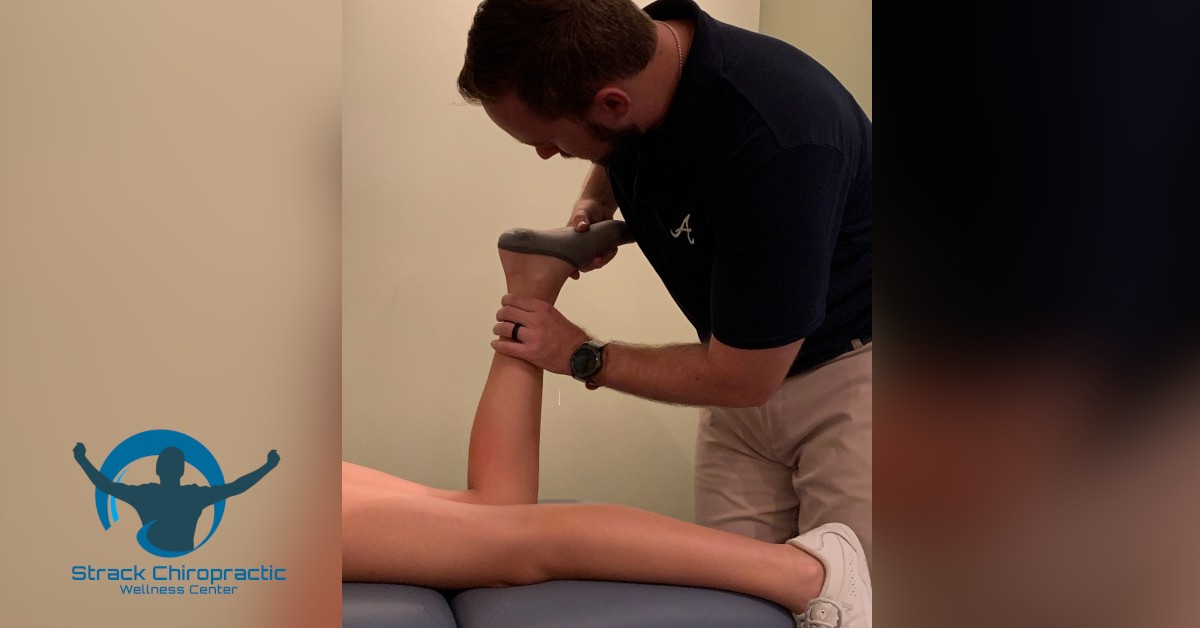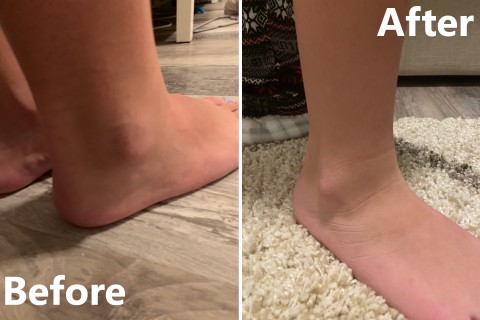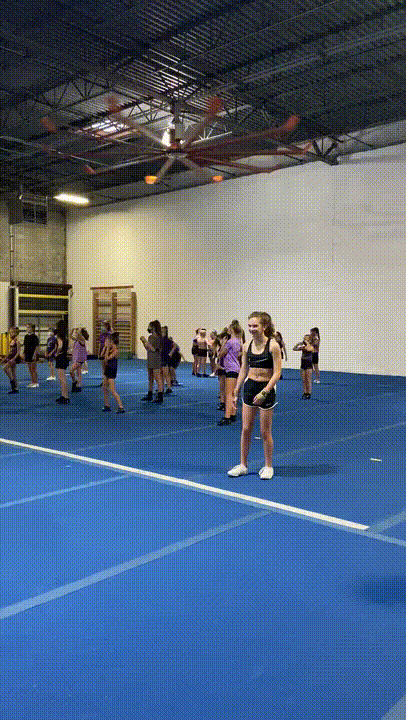Personal Injuries: Should I See a Chiropractor?
While there are certainly ways to strengthen your body to prevent injuries, not everything is avoidable. Life just happens and many of my patients start coming to me because of an injury of some kind. Some come in immediately while others try some at-home remedies before they make an appointment. However, I have seen first-hand proof that addressing the injury as quickly as possible will greatly reduce the recovery period. Most recently, I had two 11-year-old patients come to see me, both with ankle injuries. Though their stories are similar in many ways, there is a key difference that determined how quickly these young girls got back to their sport.
Patient #1
Injury
My first patient sprained her ankle (inversion) twice in one hour while tumbling on October 1st. The original injury didn't hurt much, but the second time, the patient felt a pop and fell. She couldn't put any weight on it, so a non-healthcare provider gave her a boot with instructions to rest, ice, and take Advil until it feels better. Initially, the pain was rated a 6/10 on the pain scale and did not change until her first visit at Strack Chiropractic Wellness Center on October 19th.
Exam Results
- Palpatory tenderness on the lateral malleolus and surrounding structures, anterior talus, along the 5th metatarsal, and Achilles tendon.
- Some hip and low back soreness from limping with the boot.
- Pain with joint motion along the 5th metatarsal (negative x-ray result).
- Limited ankle mobility with no real range of motion due to pain.
Treatment
After the 1st treatment, I taught her how she needs to walk with the goal of eliminating the need for the boot as soon as possible. That same day, she walked out of the office. During the 2nd visit, we saw a lot of progress as I performed the Active Release Technique (ART) on all involved structures. After ART, she was able to stand up and put all of her weight on her ankle. I sent her home with a list of stretches and exercises for her to perform for one hour every day. After the 5th visit, my patient was able to return to her tumbling class. After her 6th visit, she was back to full participation with only intermittent 2/10 pain. With every visit, we worked on her range of motion, performed ART, and used different types of electric stimulation. This helped with swelling, inflammation, and pain modulation. To keep the swelling and inflammation to a minimum, we also taped her ankle.
Patient #2
Injury
This patient came to the office 30 minutes after a hyper dorsiflexion ankle injury, with her toes almost touching her skin. She couldn't walk into the office by herself and was assisted by her mom since she couldn't put any weight on the foot without 10/10 pain. She had severe pain and tenderness over two bones, so we decided to x-ray. The results came back as negative, but the Achilles rupture test was inconclusive, so she was referred to a specialist the next day. All tests came back negative and she was prescribed rest, ice, Advil, and a boot.
Exam Results
- Strained soleus, gastrocnemius, Achilles, peroneal muscles, and the flexor halluces longus.
- Strained ATFL, flexor retinaculum, deltoid ligament, and her peroneal retinaculum.
- 9/10 pain at 4 different areas during her palpatory exam.
- The pain was worse on plantar flexion but was relieved on dorsiflexion.
Treatment
Our first goal was to get her out of the boot. The ankle joint needed to be mobile, so we needed to restore her range of motion as soon as possible. The initial treatment of this injury was intense. We had to push her to her limits of pain tolerance so we could get her up and walking on the first day. After the 1st treatment, she could bear weight on her own without pain. However, walking with a normal gait was still a 5/10 on the pain scale. I taught her how to walk properly and sent her home with some exercises to do every day at home. On her 3rd treatment, my patient was able to walk into the office without a boot. Her pain level was down to a 5/10. After only six days and three treatments, she had her first day without any pain other than some minor tenderness on the bottom of her foot. After one week, I got a text from her mom that she felt almost 100% and even went to her first cheer/gymnastics practice 11 days after as she eased her way into activity.
Analysis
- Patient 1 came in three weeks after her initial injury and returned to practice 32 days later.
- Patient 2 came in the same day as her injury and returned to practice 11 days later.
- Both injuries would typically call for rest, ice, and Advil for 3-6 weeks.
With the Active Release Technique, we can treat the injured structures and accelerate the healing process, cutting time away from activity in half! The sooner an injury is treated, the less time the injury has to spread to other joints. Inflammation can cause a lot of problems when the joint is stagnant. If the structures are intact, then regaining full range of motion should be the priority. If a joint that is supposed to be mobile is injured, one of the worst things a person can do is immobilize it as this increases the potential of delaying the healing process and causing future problems.
No one wants to spend time immobilized – especially during the holiday season! If you get injured, give us a call at 678-494-9668 to schedule your appointment as soon as possible!



